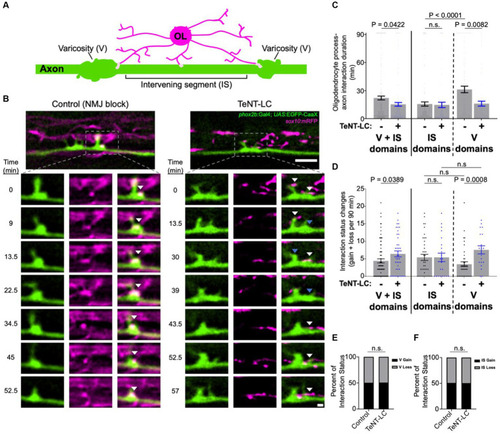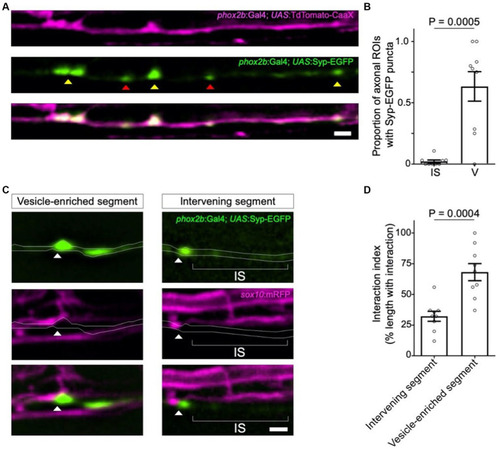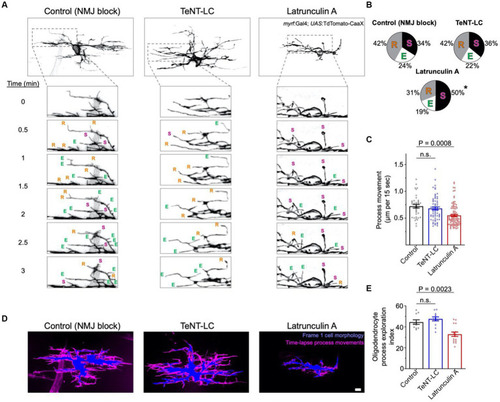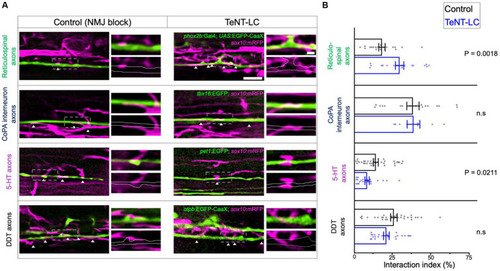- Title
-
Synaptic vesicle release regulates pre-myelinating oligodendrocyte-axon interactions in a neuron subtype-specific manner
- Authors
- Gronseth, J.R., Nelson, H.N., Johnson, T.L., Mallon, T.A., Martell, M.R., Pfaffenbach, K.A., Duxbury, B.B., Henke, J.T., Treichel, A.J., Hines, J.H.
- Source
- Full text @ Front. Cell. Neurosci.
|
Synaptic vesicle release stabilizes oligodendrocyte interactions at axon varicosities. |
|
Syp-EGFP+ synaptic vesicles localize at sites of oligodendrocyte process interaction. |
|
Synaptic vesicle release does not regulate overall exploratory behavior of all oligodendrocyte process extensions. |
|
Synaptic vesicle release regulates oligodendrocyte-axon interactions in a neuron subtype specific manner. |




